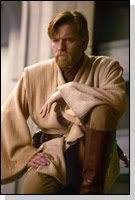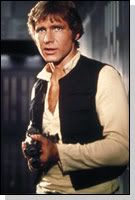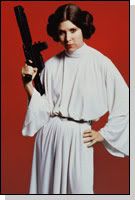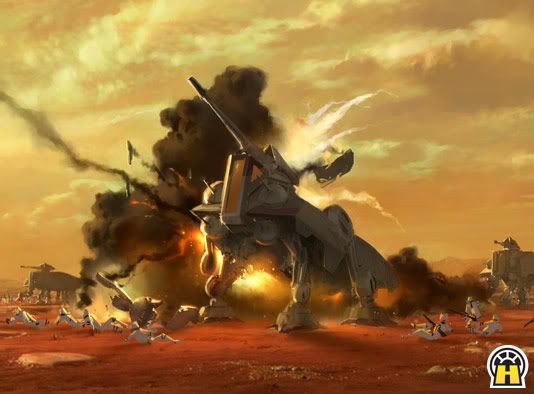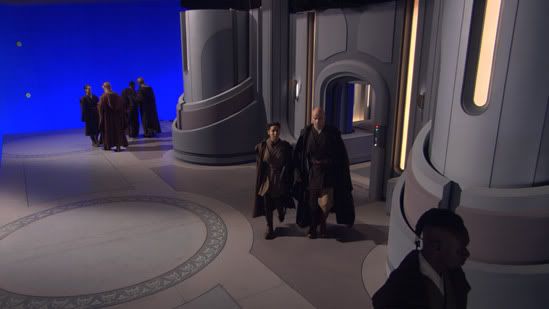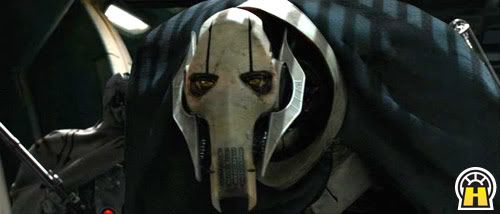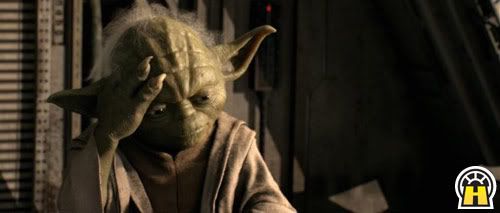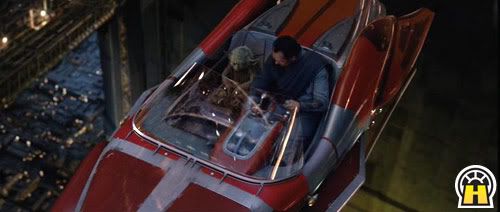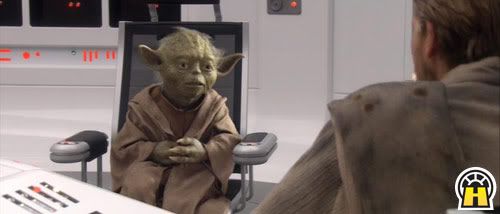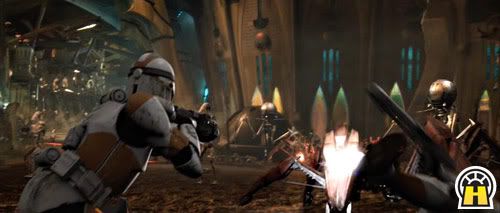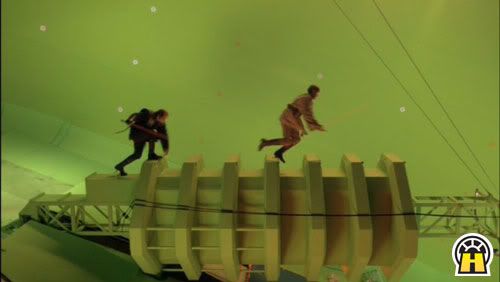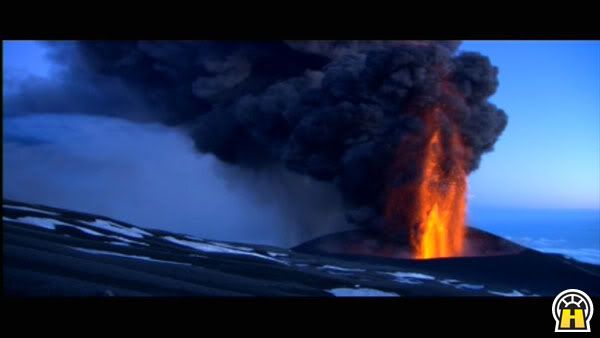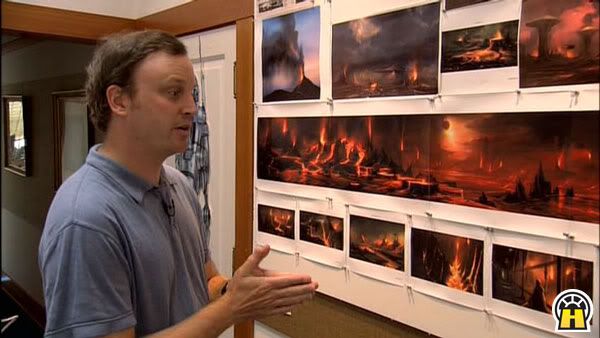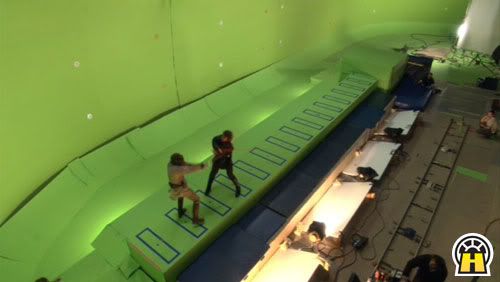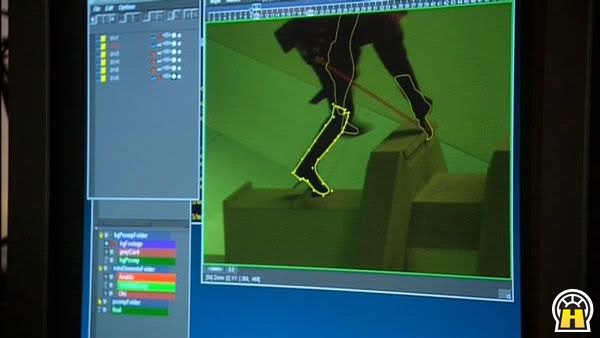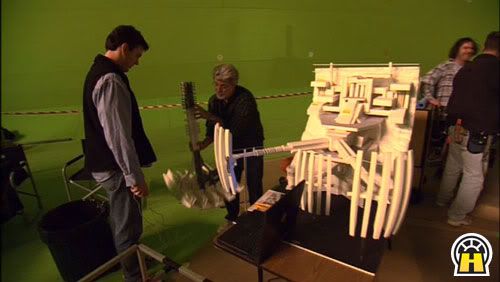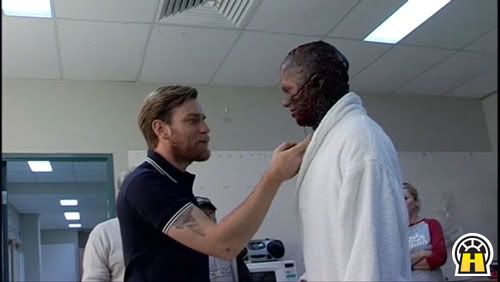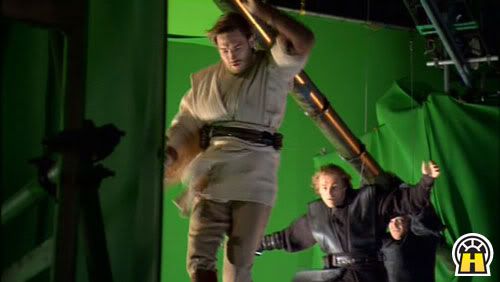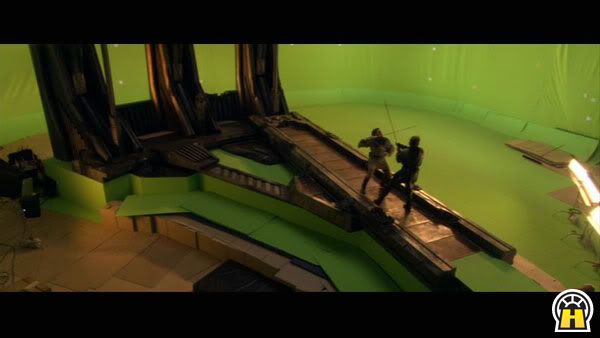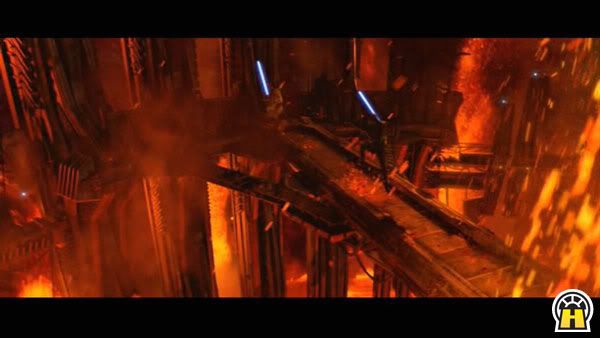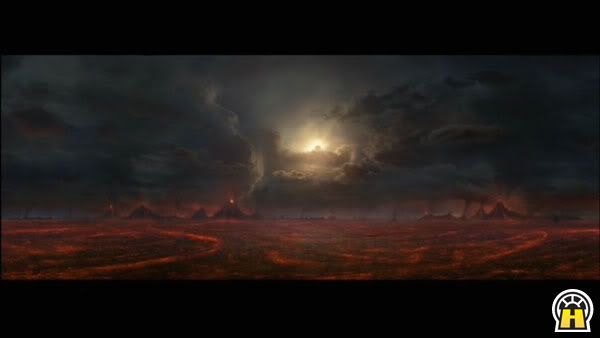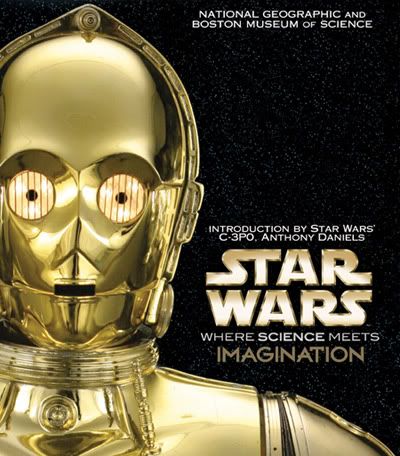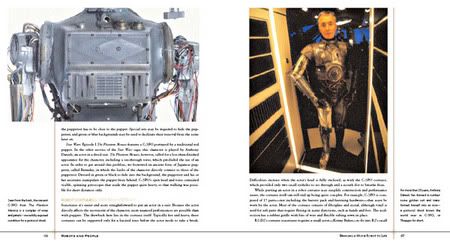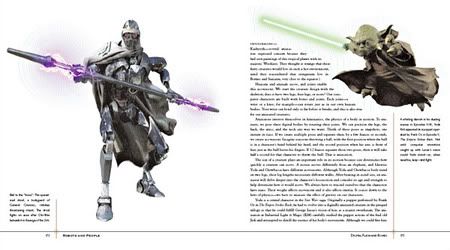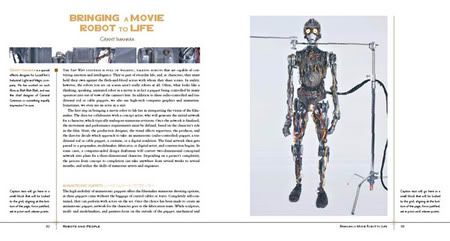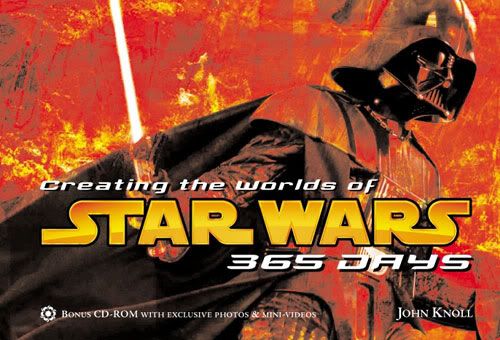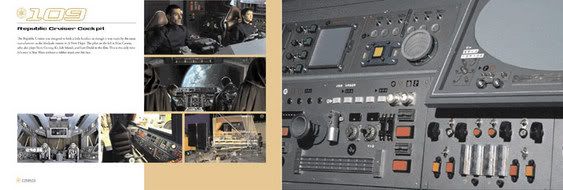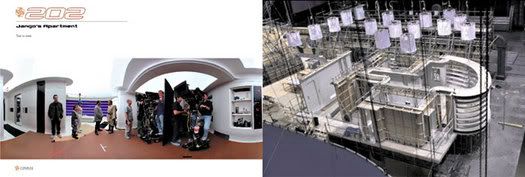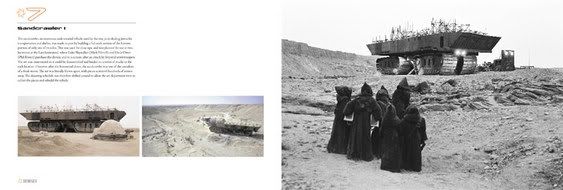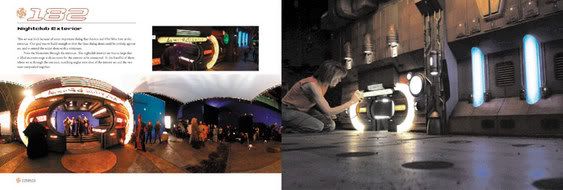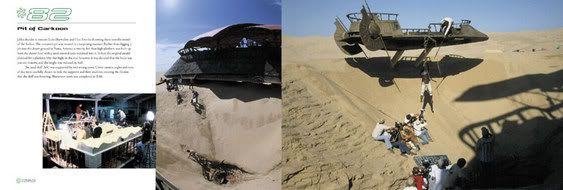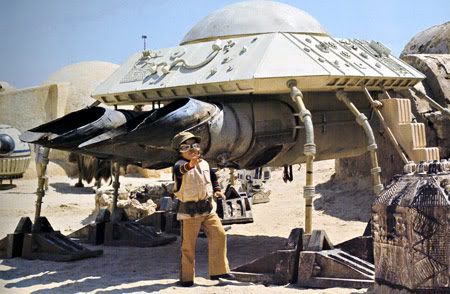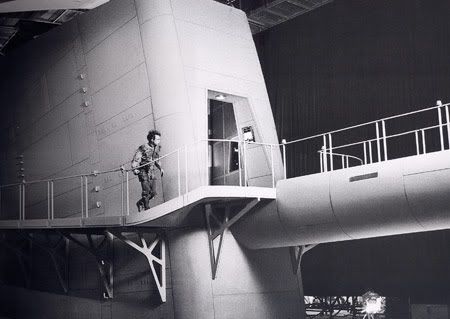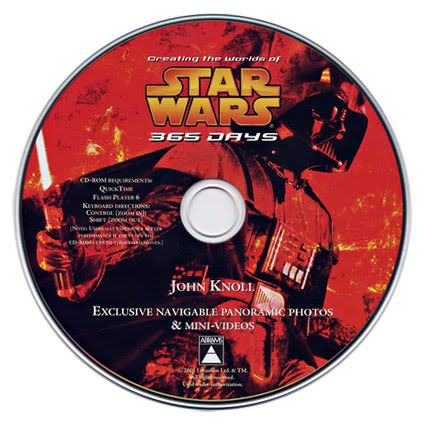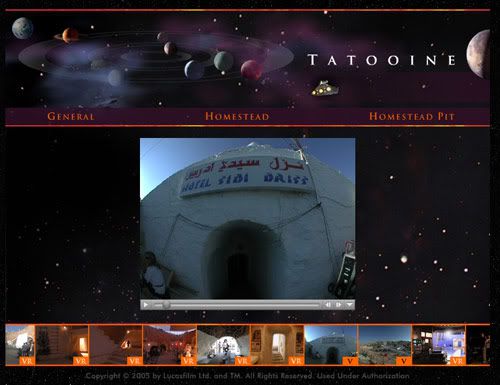TELEVISION NEWS:Invasion Tops in Four LPM CitiesThe Sept. 21 premiere of ABC’s
Invasion was not only the highest-rated new show of the season nationally among Adults 25-54, but it was also number one in four of the seven local people meter markets.
According to demographic ratings released Thursday by Nielsen Media Research,
Invasion was tops among Adults in Boston, Chicago, Los Angeles and Philadelphia.
In New York, NBC’s
My Name is Earl was No. 1, while CBS’
Criminal Minds was the top-rated premiere in San Francisco.
All too predictably, in Washington, D.C., ABC’s
Comander-in-Chief was the top-rated new show.
Among 18-34 year-olds, local market tastes varied when it came to the top new show.
Invasion was No. 1 in Chicago and Los Angeles. NBC’s
Apprentice: Martha Stewart was No. 1 in Boston. UPN’s
Everybody Hates Chris was No. 1 in New York. Fox’s The
War at Home was No. 1 in Philadelphia. In San Francisco, Fox’s
Prison Break was No. 1.
My Name is Earl was No. 1 nationally and in Washington, D.C.
Among adult women,
Commander in Chief was the highest rated new program in six of the seven LPM markets with the exception of San Francisco, where
Criminal Minds was No. 1.
For adult men,
Invasion was the highest rated new premiere in Boston, Chicago, and Los Angeles.
My Name is Earl was No. 1 in Washington, D.C. and San Francisco.
Commander in Chief was No. 1 in New York and
Criminal Minds was No. 1 in Philadelphia.
The ratings release marks the first time audience demographics have been available for premiere episodes in local markets.
EDITOR'S NOTE: IS IT JUST ME, OR IS EVERYONE ELSE KIND OF SURPRISED AT THE VARIANCES? I MEAN, HERE WE ARE ALL WATCHING THE SAME STUFF, MASS MEDIA BEING MASS AND ALL, AND YET THERE ARE STILL SO MANY REGIONAL DIFFERENCES. (AND AGE AND GENDER DIFFERENCES). JUST A LITTLE EYE-OPENING....WB net cancels 'Legal,' orders more 'Supernatural'The WB has ordered a full season of "Supernatural," but called it quits on another new series, "Just Legal."
EDITOR'S NOTE: THEY GAVE "JUST LEGAL" THREE VIEWINGS. WHY EVEN BOTHER BUYING THE PILOT IF YOU AREN'T GOING TO SHOW IT AT LEAST A MONTH. HOW IS THAT GOOD BUSINESS?The network disclosed Wednesday it has halted production on "Legal," a courtroom drama starring Don Johnson from Warner Bros. Television, just as it completed shooting on its seventh episode. Three episodes of "Legal" have aired to date and been greeted coolly, averaging 3.1 million viewers, in the Monday 9 p.m. time slot. WB hasn't decided yet what will air next week in the "Legal" slot.
EDITOR'S NOTE: WB DOESN'T EVEN HAVE ANYTHING ELSE TO SHOW IN THE SLOT AND THEY CANCEL IT? AGAIN...HOW IS THAT GOOD?NBC Slates Live Episode of 'West Wing,' Will Stir DebateIN A STUNT TO CREATE some buzz for sagging Sunday night political drama "West Wing," NBC has confirmed plans to air a rare live episode on Nov. 6 featuring a live debate between two fictional Presidential candidates. NBC will produce two separate live telecasts of the episode: one each for East and West Coast feeds.
EDITOR'S NOTE: I THINK THIS IS MY REWARD FOR WATCHING ALL THE 'REAL' POLITICAL DEBATES LAST YEAR. (AT LEAST WITH THESE, THE CANDIDATES WILL BE BETTER LOOKING!)THIS NEXT ONE SUBMITTED BY NON-DWEEB DEBS! (IN OUR UNIVERSE, WE CALL THIS 'ENABLING') ----On 'Alias,' the Star Is Now Spying for Two
By JODI KANTOR
Published: October 6, 2005
Tonight's episode of "Alias," the spy drama starring Jennifer Garner, will involve a typical night's work for secret superagent Sydney Bristow: she will pummel a few bad guys, steal some intelligence, nearly be sucked from a speeding airplane. It's routine stuff for the show, but for one thing: both actress and character will have a belly that is visibly, strikingly swollen from its normally taut state.
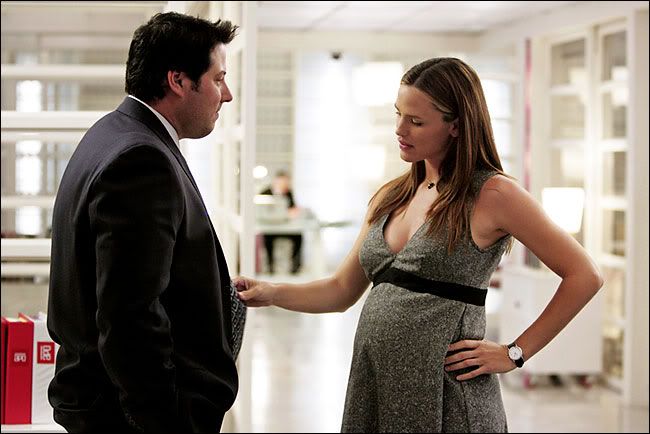
Jennifer Garner ofABC's "Alias" with Greg Grunberg on last week's season premiere.
This season, Sydney becomes perhaps television's most formidable pregnant character to date: a cunning C.I.A. operative who is likely to slip in and out of Pyongyang between obstetrician appointments; the only agent in her unit whose bulletproof vest requires an expandable waistline; and a marvel of endurance who will add childbirth to a résumé of trials that include being tortured and buried alive.
It may not amount to an "Ellen" or a "Murphy Brown" moment, but it's one that says a great deal about what is now permissible on television and during pregnancy. Consider the case of Lucille Ball, still television's most famous example of simultaneous on- and off-screen pregnancy. The storyline was a national sensation, and Lucy's birth episode earned higher ratings than President Dwight Eisenhower's inauguration. And yet pregnancy was still considered such a delicate matter that the network vetted the episodes with religious leaders and advised against using the word "pregnancy" on the air.
Later, impending parenthood became the sturdiest of sitcom plot devices. But many actresses who became pregnant saw their characters subjected to indignities: though Lisa Kudrow's pregnancy was incorporated into the plot of "Friends," when Jane Leeves of "Frasier" started to show with her first pregnancy, her nonpregnant alter ego suffered jokes about sudden weight gain. Characters on action series also met mixed fates. Tyne Daly of "Cagney & Lacey" and Lucy Lawless of "Xena: Warrior Princess" were able to work their pregnancies into their shows, but when Gillian Anderson of "The X Files" became pregnant, Agent Scully wore huge coats and then was whisked away for a gruesome abduction. EDITOR'S NOTE: THEN AGAIN, COMPARED TO LABOR, THAT ALIEN THING WAS PROBABLY A WALK IN THE PARK?
By contrast, "Alias" has built an entire season around the blessed event. (And a marketing campaign: The advertisements feature Ms. Garner, one hand protectively on her middle, and the words "Expect More.") When the producers initially found out that Ms. Garner was pregnant, they briefly considered using computers to paste her head on another actress's body, said Jeff Pinkner, an executive producer of the show. Instead, they decided to swing in the far opposite direction, playing the pregnancy for all of its dramatic, physical and comedic possibilities.
Thus last week's season premiere showed Sydney and her fiancé, Michael Vaughn, a fellow agent, finding out about their impending parenthood while fleeing a party with a purloined document; seconds after receiving the doctor's call, they parachuted off a South African seaside cliff. Before the hour was up, Agent Vaughn was gunned down by a shadowy assassin. Now Sydney must avenge his death and protect her baby from those same menacing forces.
To do so will require a rather fantastical approach to what can be an exhausting, nauseating condition. "You can't be rappelling off the side of buildings when you have to go to the bathroom every five minutes," said Amy Spar, 29, a new mother in Chicago and a longtime fan of the show. The writers are making a few concessions to obstetrical reality - for example, Sydney has trouble hoisting herself up after prenatal yoga class. Nor will she be able to slip around incognito anymore.
"When you're pregnant, you're not as anonymous," said Alison Schapker, a supervising producer on "Alias." "For Syd, it will be a sharp contrast with how she usually moves in the world" to "have strangers ask when she's due and want to touch the baby." Instead, Sydney will use the pregnancy as part of her subterfuge, tricking her opponents into believing she's helpless.
The writers do sense a few taboos in depicting a pregnant woman in mortal danger. Sydney will not purposely place herself in harm's way. Like other violently inclined heroines - from Sarah Connor in "Terminator 2" to The Bride in "Kill Bill" - she fights to protect or avenge her family. While she is "by no means going to retire to the office," Mr. Pinkner said, Sydney will focus more on intelligence gathering than physical tasks - at least until she has no choice. And even as she becomes something of a swollen-bellied superheroine, Sydney will mist up over sonogram images and choose cute accessories for her nursery.
What viewers may find most novel and startling about the story is its depiction of pregnancy as a highly seductive state - "active and glam and sexy," in Ms. Schapker's words.
"Sydney has always used her sexuality as a tool to take down the bad guys," Mr. Pinkner said, promising she will use her newfound curves to her professional advantage. "I find pregnant women very sexy, and I don't mean that in an icky way," he added. But some viewers may disagree, said Lynn Spigel, a professor of radio, television and film at Northwestern University. "For anyone who watches the show because they think she's hot, it does become an issue," she said. EDITOR'S NOTE: THE SHOW IS WAY TOO SMART FOR THAT TO BE THE MAIN REASON PEOPLE WATCH. (AND THE HECK WITH THOSE DUMMIES, IF IT IS)
What may seem more familiar to viewers is Sydney's commitment to her job. The real C.I.A., in compliance with federal regulations, allows female agents, even those in the most taxing field positions, to work until when they deliver. On the most basic level, Sydney is simply another woman "working through her pregnancy," Ms. Schapker said.
As is Jennifer Garner. The actress married the actor Ben Affleck earlier this year and has since blurted out the baby's gender - it's a girl - on "The Tonight Show With Jay Leno" and traded child-rearing tips on the air with Martha Stewart. (Ms. Garner would not comment for this article.) Given the tabloid coverage of the couple, the public may know too much about Ms. Garner's pregnancy for the show to leave it alone.
The attention seems unlikely to result in high ratings for "Alias," which ABC has moved from a plum spot right after the hit "Lost" to a position opposite CBS's "Survivor," "The O.C." on Fox, and WB's "Smallville." (The season premiere was the lowest-rated yet for the show, finishing third in its time period in total viewers.) But the storyline may give the show some clarity: with characters who regularly switch between being alive or dead (or good or evil) and lots of business about a 15th-century prophecy, it hasn't always been clear what Agent Bristow is fighting for. Now it is. And the baby's father may not be as dead as he seems: Michael Vartan, who plays Agent Vaughn, is "still very much a part of the show," Mr. Pinkner hinted. EDITOR'S NOTE: OH YOU TEASE YOU TEASE....
After a climactic birth episode - don't expect Sydney to deliver in the safe, scrubbed corridors of Cedars-Sinai, the writers say - the show will take a midseason hiatus. Then Sydney will face a job description perhaps even tougher than expecting spy: new-mother spy. As with the pregnancy storyline, motherhood will allow "Alias" to present an ultra-heightened version of the concerns of regular women, and also to have fun with how a family of spooks might handle a newborn. For instance: Jack Bristow, Sydney's emotionally distant father, may be able to disarm a nuclear weapon, but can he assemble an Ikea crib? Mr. Pinkner said he wasn't sure: after all, for Jack it will be "the first time in 20 years he's used a screwdriver for its actual intended purpose."
Storyline sells Warren tale
ABC has bought a one-hour dramedy script inspired by the music of songwriter Diane Warren from Touchstone Television and Craig Zadan and Neil Meron's Storyline Entertainment.
In addition, Storyline has renewed its overall deal with Touchstone for another two years to cover series and longform musicals.
The project, a romantic comedy, will center on a fictional female songwriter who is just finding success in her career as a prolific writer of love songs but whose own love life is amiss. The project will follow her as she re-enters the dating world while trying to maintain her career. Zadan pointed out that it's not going to be a biographical take on Warren's life, nor will it aim to be an inside look at showbiz.
MOVIE NEWS:
Lowe has 'Beautiful' roles for trio
Rita Wilson, Julianna Margulies and Michelle Trachtenberg have joined Chad Lowe's feature directorial debut, "Beautiful Ohio," starring William Hurt.
Accomplice Films' first low-budget production began shooting Monday in Brooklyn.
Lowe is producing the ensemble comedy/drama with his wife, Hilary Swank, and Mark Burton. All are partners in Accomplice Films. The project is based on Ethan Canin's adaptation of his short story "Batorsag & Szerelem," from his anthology "The Palace Thief." Former NBA All-Star Reggie Miller of Baby Boom Prods. is the film's executive producer
Brosnan's not our Bond, says Campbell
Pierce Brosnan's days as chesty MI6 agent James Bond are over, "Casino Royale" director Martin Campbell confirms. EDITOR'S NOTE: IN CASE ANYONE HAS INSOMNIA AND IS STILL TRACKING THIS SCINTILLATING CASTING DECISION.....
Though rumours were kicking about that the sacked 007 would be asked back for the new film, mainly because they couldn't find a fitting proxy, the film's director says otherwise.
Campbell, who directed Brosnan in "Goldeneye" (1995), told JamesBond007.net, that Brosnan's definitely not being asked back to play Bond.
There's only four candidates for the role of the suave-super agent, says Campbell, and they're Sam Worthington, Henry Cavill, Daniel Craig and Goran Visnjic.
The four actors were tested last week and in "less than three weeks", the studio will reveal who they've chosen.
Campbell has also revealed he's looking for a Frenchman to play lead villain, Le Chiffre. EDITOR'S NOTE: ZZZZZZZZZZZZZZZZZZZZZZZZZZZZ
Dutta cast in Indiana Jones 4
So you know what that means? Yep, blow up the balloons, fling the streamers, tie a party-hat around your noggin - "Indiana Jones 4" is finally getting underway! EDITOR'S NOTE: REALLY? CAUSE I HAVE MY DOUBTS.
TheIndyExperience.com reports that the first female cast member aboard the long-awaited sequel is Texas model, Laura Dutta.
The 19-year-old stunner, whose role is yet to be revealed, will spend three months on location with star Harrison Ford shooting her scenes.
Dutta won't be the female lead though - that role is yet to be cast. Rumour has it that some of Indy's old flames from the previous films will also make appearances in the film - including Willie Scott (Kate Capshaw) and Marion Ravenwood (Karen Allen).
Meantime, the well-oiled rumour machine is spitting out a whisper that Sean Connery has been roped into reprising his role as Henry Jones, Indy's father, for the impending blockbuster - despite recent claims to the contrary.
Lars Olfen reunites with Alan Barrows
The always-versatile Ed Begley Jr has signed to star in writer/director Christopher Guest's latest film, "For Your Consideration".
The film, co-starring Guest, Eugene Levy, Jennifer Coolidge, Ricky Gervais and Michael McKean, centres on three actors who learn their respective performances in the film "Home for Purim," a drama set in the mid-1940s American South, are generating award-season buzz.
Begley Jr, who also starred in Guest's "A Mighty Wind", "Best in Show" and "This is Spinal Tap", recently shot the comedy "Franis Hamper" with Natasha Lyonne, and "Tripping Forward" co-starring former "Buffy" star Amber Benson.
Michael Douglas is Kate Hudson's Dad?
Comedies starring Michael Douglas are usually a case of hit or miss.
In the next one, called "You, Me and Dupree", the movie centres on a newlywed couple who agree to let the groom's best man stay with them after the wedding. Needless to say, they regret it.
The cast includes Owen Wilson,EDITOR'S NOTE: RUN AWAY, RUN AWAY. Kate Hudson and Matt Dillon. Douglas, soon to be seen in "The Sentinel", plays the over-controlling father of the bride, says Variety.
The Universal Pictures release is being directed by Joe and Anthony Russo.
DA BIZ:
Smaller Video Producers Seek Audiences on Net
By SAUL HANSELL
In 1999, "The Blair Witch Project" became one of the most profitable low-budget movies of all time through word-of-mouth promotion helped along by a mysterious little Web site that the film's creators put up.
Now Dan Myrick, the movie's co-director, is turning to the Internet, not just for marketing, but to deliver a whole series called "The Strand of Venice," a moody drama set in Venice, Calif.
Instead of watching the show on TV, viewers will have to go to Mr. Myrick's Web site, strandvenice.com, where a 50-minute pilot episode is available free. Future episodes will cost 99 cents, for a 30-minute film.
Video delivered over the Internet, which has been embraced by media and Internet giants like Viacom and Yahoo, is quickly shaping up as a way for smaller producers to reach an audience without having to cut deals with movie studios and the big networks that are the traditional gatekeepers of television. EDITOR’S NOTE: THEY AREN’T JUST GATEKEEPERS. THEY ARE DEEP POCKETS WITH A PROPORIONATELY BETTER CHANCE OF PRODUCING QUALITY ENTERTAINMENT. (FOR THOSE OF US WHO DON’T HAVE THE TIME TO MEANDER AROUND THE WEB HOPING TO GET A GOOD SHOW).
As interest in video soars (there are more than a million video clips currently available online), a host of new ventures is starting to cater to the publishing and advertising needs of smaller video creators. One new start-up called Brightcove, for example, has developed a system of online video production tools that makes it easier for small operations to distribute video programs as well as charge for them.
"With 'Blair Witch,' the Internet was a force in helping us in the marketing department," Mr. Myrick said. With technology from Brightcove, he said, his video company can "take a show idea, produce it in the spirit of a network series, but keep everything in-house and publish it ourselves over broadband."
He and other producers are convinced that the low cost of digital production and distribution will allow Internet TV to thrive even with small audiences. "We can get by with 100,000 subscribers," Mr. Myrick said. "Networks are canceling shows on 3 million viewers."
Already, the list of companies hoping to cash in on the video explosion is growing. Companies like thePlatform are making software tools for Web video publishing. Blinkx and Akimbo offer consumers lineups of video content. Online advertising companies are selling video ads. And Google, which is starting to carry video clips provided by large and small producers, says it is developing ways for them to make money through selling advertising.
Meanwhile, small to medium-size producers like Oxygen Media and Scripps Networks are trying to go beyond simply posting a handful of videos on their sites. They are experimenting with expanded lineups of video content, improving navigation between videos and creating a business model from video services.
"It is now possible to distribute a high-quality program that has been produced by much smaller entities," said Jeremy Allaire, the founder of Brightcove, which is based in Cambridge, Mass. He predicted a rise of new sources of video just as the Internet spawned blogs and Web sites of all stripes.
Brightcove's system, which will be formally introduced at an Internet conference today in San Francisco, combines software tools for producing and distributing video with methods for making money. Consciously modeled after Google, it is starting a network that will sell video ads associated with independent video producers, much as Google sells ads on many blogs. It also includes technology that allows producers to charge fees to watch or download video, including a way for Web site owners to place links to video content on their pages and split the revenue with the video producer.
This kind of capability is drawing interest from big players like Viacom as well as niche producers like Eco-Nova Productions, which makes documentaries for National Geographic among others.
For production companies that do not own cable networks, the Internet is a direct way to reach viewers.
Eco-Nova, a Halifax company that specializes in programs on shipwrecks, currently produces "Oceans of Mystery" for the Discovery Network. It is creating a new section on its Web site (shipwreckcentral.com) called "Live from the Dive" that follows the company's explorations day by day. The program is in the form of a blog, with text photographs and video that includes occasional live feeds from cameras on the helmets of the divers. EDITOR’S NOTE: OK, NOW YOU GET MY ATTENTION. A BLOG WITH VIDEO?! ZOWEE. (SOMEDAY, DWEEBPALS. SOMEDAY…..)
Video clips on the site will be preceded by 30-second advertisements, to be sold by Brightcove. In addition, Eco-Nova is developing a $10-a-month subscription service that will let users watch clips from the company's 10 years of underwater exploration, many of which have never been shown on TV.
"That has allowed our television watchers to have another whole interaction with the television show," said John Davis, its president. "We can talk to our audience directly for the first time, not filtered through a broadcaster."
While there have been a few successful subscription services for Internet video, most notably those offered by Major League Baseball, the driving force of the online video market is advertising.
"The advertising model is extremely simple and very attractive: you simply put your 30-second commercial in front of the video," said Josh Bernoff, an analyst with Forrester.
Advertisers are paying $25 per thousand users who see their online commercials, more than they pay for network television, Mr. Bernoff said.
This lucrative structure is driving nearly every big Internet and media company to test new ways to distribute their Internet offerings to new audiences. One of the pioneers is Scripps Networks, which allows Internet users to search for and watch clips from its HGTV and Food Network channels.
Oxygen Network, by contrast, is expanding into new areas with a series of short, irreverent parenting videos called "Oh Baby." It is distributing these videos through video-on-demand systems offered by cable companies as well as a new Web site (www.oxygen.com/ohbaby). Oxygen hopes to use that site to tap into the market for online advertising market.
It also wants to have its video clips available on other Web sites. If someone clicks to watch one of those clips, Oxygen will share the advertising revenue with the site owner, using the Brightcove system.
"There are a million baby sites out there and we are not interested in competing with them," said Beth Harrison, Oxygen's director of cable technology initiatives. "If we can create engaging content for parents, we can offer it to them."
Not every independent producer believes it needs to have an elaborate distribution scheme to reach viewers. Start-ups like the youth-oriented ManiaTV and ChannelBlast, which just introduced its first program, "NewzViewz" (newzviewz.com), a live public affairs discussion program, are trying to become Internet TV networks simply by putting video on their sites.
"Our distribution is the Internet," said Mark Lipsky, the executive producer of ChannelBlast, who said he had no need for supporting technology from companies like Brightcove. "Two to three years from now, we will be able to compete with any television network, but we will be global and they won't be." EDITOR’S NOTE: UMM…SO…UH…NANNYNANNY BOOBOO. YEAH…..
AND ODD END:
Karen from 'Will and Grace' mentions Harry Potter
In an episode of the comedy show aired last night on NBC, Karen said: "I've recently gotten into those Harry Potter books. I always pretend to root for Gryffindors but secretly, I love my Slytherin boys." EDITOR'S NOTE: WELL MALFOY SENIOR SURE HAS MY VOTE!
